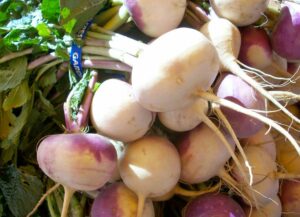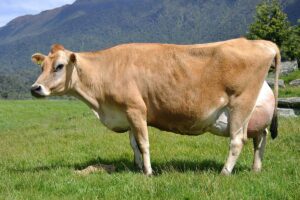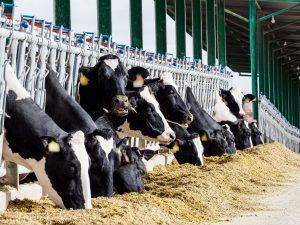Maria Villagrasa & Fernando Diaz
Rape (Brassica napus) is a plant of the cruciferous family along with cabbages, cauliflowers, turnips, etc. In recent years there has been a significant increase in its productivity, reaching between 11-14 T/ha, mainly as a result of new varieties and hybrids.
This plant offers good quality forage that can be preserved both as hay, silage, or even used as grazed forage because of its good regrowth. There can be large differences however in its dry matter (DM) content depending on the variety, so it is important to select those with the best forage characteristics and high DM production.
To optimize production, it is also necessary to develop the right technology to manage the crop. From this perspective it is well known that sowing density is important as it affects plant growth and the cost of forage production.
Another element to consider is the height reached by the plant at harvest time and the height at which it is cut; both parameters influence regrowth rate and can also affect DM content and again cost of production.
One study (Islam, MR. et al, 2020) assessed the effects of defoliation height (DH; plant height when harvested) and defoliation intensity (DI; height at which the plants were cut) in a controlled environment, to determine the physiological basis of the regrowth and the nutritional value of rape forage.
Forage rape was sown (Brassica napus L. cv. Goliath) and harvested twice, the second time about two months after the regrowth of the first had started. Plants that reached a DH of 40, 70 and 90 cm were harvested for each of the DIs of 5, 20 and 35 cm, so that each height had three cutting intensities.
During the first harvest it was observed that the increase in height from 40 to 90 cm produced more DM, from 2.6 to 24.0 g DM/plant, and increased the weight of the residual plant.
During the second harvest the increase of DH from 40 to 90 cm and the reduction of the DI (i.e. an increase in the residual height of the plant) from 5 to 35 g DM/d per plant increased DM from 0.2 to 0.5 g DM/plant, and from 0.2 to 0.4 g DM/plant, respectively, which peaked when the DH was 90 cm and the DI 35 cm.
The increase in DH from 40 to 90 cm caused the number of total and axillary leaves to increase, which also peaked when DH was 90 cm and the DI was 35 cm.
It is very likely that the increase in height allowed for a greater development of the leaves and therefore greater plant weight. However, from about 90 cm in height more yellow and dead leaves began to appear and, therefore, photosynthesis was reduced and consequently tended to decrease plant weight. These results suggest that the optimal time to harvest rape for forage is when the plant is approximately 90 cm tall.
Relationship between sugar and nitrogen content
The increase in DH from 40 to 90 cm increased the concentration of sugars (% of DM) of both the residual stem and the root from 6.7 to 13.0 and 3.0 to 8.5 respectively. Similarly, the increase in DH also increased the sugar content throughout the plant (from 0.05 to 2.54 g DM/plant). On the other hand, the decrease in DI from 5 to 35 cm also increased the sugar content in the residual stem (0.04 to 1.86 g DM/plant).
The nitrogen content relative to DH was similar for all values in the residual stem but moving from DH of 40 to 90 cm increased nitrogen in the root from 0.01 to 0.08 g DM/plant. Decreased DI from 5 to 35 cm, and increased nitrogen in the residual stem from 0.03 to 0.16 g DM/plant.
The high content of sugars and nitrogen (necessary to carry out photosynthesis) in the plants with higher DH and lower DI caused the regrowth rate to increase, something that was achieved when the plants reached approximately 90 cm and were harvested between 20 and 35 cm above the ground.
The optimum defoliation height for forage rape is between 70 and 90 cm
In the first harvest the DH increase from 40 to 90 cm decreased the amount of protein and nitrates but increased neutral detergent fiber (NDF). The decrease in DI from 5 to 35 cm decreased ADF, NDF, and nitrates, although the values of the latter remained similar at an DI between 20 and 35 cm when the DH was 70 to 90 cm. Neither DH nor DI affected in vitro DM digestibility, although the increase in DH decreased the pH of the final fermentation products (from 6.5 to 5.8).
In the second harvest the increase in DH and the decrease in DI reduced the amount of protein (from 37.3% to 5.0% DM), NDF (25.1% to 18. 4% DM) and nitrate (from 1.63% to 0. 06% DM).
In general, the data show that the harvest at 90 cm high had a higher production regardless of the intensity of defoliation, but the harvest of fodder at this stage had a lower protein content. However, the protein content of forage rape in 70 cm treatments was higher (26. 0 – 43. 8% DM) compared to the treatments of 90 cm (5.0 – 12. 6% DM) although DM production was approximately one third in the treatments of 70 cm (1.4–1.6 T DM/ha) compared to 90 cm (4.2–5.0 t DM/ha) treatments.
These results suggest that rapid changes in the plant, particularly in terms of protein production and content, occur during the period of 70 to 90 cm in height. Therefore, it is necessary to find the balance between production and protein content of forage rape in the treatments between 70 and 90 cm in height at different defoliation intensities.
Conclusions
- Total forage production was higher when plants reached 90 cm in height regardless of defoliation intensity.
- Regrowth during the first harvest was greater when the plants reached 90 cm and were harvested 35 cm above ground. However, there were lower protein and nitrate contents in the forage at this stage.
To optimize DM yields it is recommended for defoliation height to be between 70 and 90 cm, which will also result in protein and energy contents at concentrations desirable for dairy cows in lactation.
Reference
Islam MR, Garcia SC, Horadagoda A, Kerrisk KL, Clark CEF. Management strategies for forage rape (Brassica napus L. cv Goliath): Impact on dry-matter yield, plant reserves, morphology and nutritive value. Grass Forage Sci. 2020;75:96–110.
© 2020 Dairy Knowledge Center. All Rights Reserved.









